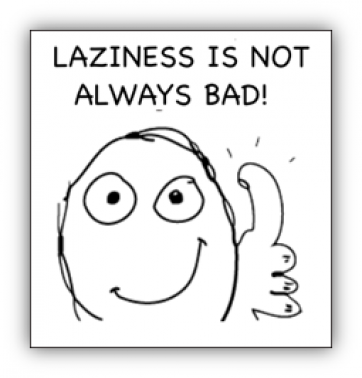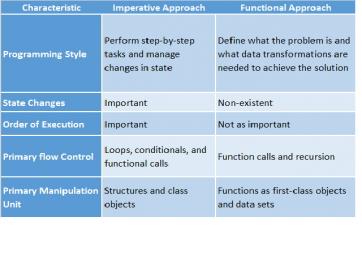 Web Front-end
Web Front-end
 JS Tutorial
JS Tutorial
 Explore the fun of JavaScript functional programming_javascript skills
Explore the fun of JavaScript functional programming_javascript skills
Explore the fun of JavaScript functional programming_javascript skills
Programming Paradigm
A programming paradigm is a framework composed of tools for thinking about problems and realizing a vision for the problem. Many modern languages are polyparadigm (or multi-paradigm): they support many different programming paradigms, such as object-oriented, metaprogramming, functional, procedural, etc.

Functional programming paradigm
Functional programming is like a hydrogen-powered car—advanced and futuristic, but not yet widely adopted. In contrast to imperative programming, it consists of a sequence of statements that update the global state at execution time. Functional programming turns calculations into expression evaluations. These expressions are all composed of pure mathematical functions that are first-class (can be used and processed as normal values) and have no side effects.

Functional programming values the following values:
Function is a first-class priority
We should treat functions the same as other class objects in programming languages. In other words, you can store functions in variables, create functions dynamically, and return functions or pass functions to other functions. Let’s take a look at an example...

A string can be saved as a variable, and so can functions, for example:
A string can be saved as an object field, and so can functions, for example:
A string can be created when it is needed again, and so can functions, for example:
A string can be passed to the function as an input parameter, and the function can also be:
A string can be used as a function return value, as can functions, for example:
return “Hello”;
return function() { return “Hello”};
Advanced Case

If a function takes other functions as input parameters or as return values, it is called a higher-order function. We have just seen an example of a higher-order function. Next, let's look at a more complex situation.
Example 1:
[1, 2, 3].forEach(alert); // alert 弹窗显示“1" // alert 弹窗显示 "2" // alert 弹窗显示 "3”
Example 2:
function splat(fun) {
return function(array) {
return fun.apply(null, array);
};
}
var addArrayElements = splat(function(x, y) { return x + y });
addArrayElements([1, 2]);
//=> 3
最爱纯函数

纯函数不会有其他的副作用,所谓的副作用指的是函数所产生的对函数外界状态的修改。比如:
- 修改某个变量
- 修改数据结构
- 对外界某个变量设置字段
- 抛出例外或者弹出错误信息
最简单的例子就是数学函数。Math.sqrt(4) 函数总是返回2。他不会用到任何其他心寒信息,如状态或者设置参数。数学函数从来不会造成任何副作用。
避免修改状态

函数式编程支持纯粹的函数,这样的函数不能改变数据,因此大多用于创建不可改变的的数据。这种方式,不用修改一个已存在的数据结构,而且能高效的新建一个.
你也许想知道,如果一个纯粹的函数通过改变一些本地数据而生产一个不可改变的返回值,是否是允许的?答案是可以。
在JavaScript中极少的数据类型是默认是不可改变的。String是一个不能被改变的数据类型的例子:
var s = "HelloWorld"; s.toUpperCase(); //=> "HELLOWORLD" s; //=> "HelloWorld"
不可改变状态的好处
• 避免混乱和增加程序的准确性:在复杂系统内,大多数难以理解的Bug是由于状态通过在程序中外部客户端代码修改而导致的。
• 确立“快速简洁”的多线程编程:如果多线程可以修改同一个共享值,你不得不同步的获取值。这对专家来说都是十分乏味并且易出错的编程挑战。
软件事务内存和Actor模型提供了直接在线程安全方式下处理修改。
使用递归而非循环调用

递归是最有名的函数式编程技术。如果您还不知道它的话,那么可以理解为递归函数就是一个可以调用自己的函数。
替代反复循环的最经典方式就是使用递归,即每次完成函数体操作之后,再继续执行集合里的下一项,直到满足结束条件。递归还天生符合某些算法实现,比如遍历树形结构(每个树枝都是一颗小树)。
在任何语言里,递归都是一项重要的函数式编程方式。很多函数语言甚至要求的更加严格:只支持递归遍历,而不支持显式的循环遍历。这需要语言必须保证消除了尾端调用,这是 JavasSrip 不支持的。
惰性求值优于激进计算

数学定义了很多无穷集合,比如自然数(所有的正整数)。他们都是符号表示。任意特定有限的子集都在需要时求值。我们将其称之为惰性求值(也叫做非严格求值,或者按需调用,延迟执行)。及早求值会强迫我们表示出所有无穷数据,而这显然是不可能的。
很多语言都默认是惰性的,有些也提供了惰性数据结构以表达无穷集合,并在需要时对自己进行精确计算。
很明显一行代码 result = compute() 所表达的是将 compute() 的返回结果赋值给 result。但是 result 的值究竟是多少只有其被用到的时候才有意义。
可见策略的选择会在很大程度上提高性能,特别是当用在链式处理或者数组处理的时候。这些都是函数式程序员所喜爱的编程技术。
这就开创可很多可能性,包括并发执行,并行技术以及合成。
但是,有一个问题,JavaScrip 并不对自身进行惰性求值。话虽如此,Javascript 里的函数库可以有效地模拟惰性求值。
闭包的全部好处
所有的函数式语言都有闭包,然而这个语言特性经常被讨论得很神秘。闭包是一个函数,这个函数有着对内部引用的所有变量的隐式绑定。换句话说,该函数对它引用的变量封闭了一个上下文。JavaScript 中的闭包是能够访问父级作用域的函数,即使父级函数已经调用完毕。
function multiplier(factor) {
return function(number) {
return number * factor;
};
}
var twiceOf = multiplier(2);
console.log(twiceOf(6));
//=> 12
声明式优于命令式编程
函数式编程是声明式的,就像数学运算,属性和关系是定义好的。运行时知道怎么计算最终结果。阶乘函数的定义提供了一个例子:
factorial(n) = 1 if n = 1
n * factorial(n-1) if n > 1
该定义将 factorial(n) 的值关联到 factorial(n-1),是递归定义。特殊情况下的 factorial(1) 终止了递归。
var imperativeFactorial = function(n) {
if(n == 1) {
return 1
} else {
product = 1;
for(i = 1; i <= n; i++) {
product *= i;
}
return product;
}
}
var declarativeFactorial = function(n) {
if(n == 1) {
return 1
} else {
return n * factorial(n - 1);
}
}
从它实现阶乘计算来看,声明式的阶乘可能看起来像“命令式”的,但它的结构更像声明式的。
命令式阶乘使用可变值、循环计数器和结果来累加计算后的结果。这个方法显式地实现了特定的算法。不像声明式版本,这种方法有许多可变步骤,导致它更难理解,也更难避免 bug 。

函数式JavaScript库
有很多函数式库:underscore.js, lodash,Fantasy Land, Functional.js, Bilby.js, fn.js, Wu.js, Lazy.js, Bacon.js, sloth.js, stream.js, Sugar, Folktale, RxJs 等等。
函数式程序员工具包
map(), filter(), 和 reduce()函数 构成了函数式程序员工具包的核心。 纯高阶函数成了函数式方法的主力。事实上,它们是纯函数和高阶函数应该仿效的典型。它们用一个函数作为输入,返回没有副作用的输出。
这些 JavaScript 函数对每一个函数式程序来说都是至关重要的。他们可以去除循环和语句,使得代码更加整洁。这些都是实现 ECMAScript5.1 的浏览器的标准,他们只处理数组。每次调用都会创建创建并返回一个新的数组。已存在的数组不会被修改。但是稍等,事情很不止于此。。。他们还将函数作为输入参数,通常是作为回调的匿名函数。他们会遍历将整个数组并且将该回调函数应用与每一项!
myArray = [1,2,3,4];
newArray = myArray.map(function(x) {return x*2});
console.log(myArray); // Output: [1,2,3,4]
console.log(newArray); // Output: [2,4,6,8]
除了这三个函数,还有很多函数可以扎入到几乎每一个函数式应用里:
forEach(),concat(), reverse(), sort(), every() 以及some().
JavaScript的聚范式
JavaScript当然不是严格意义上的函数式编程语言,这也促使了对其他范式的使用:
命令式编程:基于详细操作描述式的编程
基于原型的面向对象式编程:基于原型对象及其实例的编程
元程序编程:操纵JavsScript执行模型的编程方式。对元程序编程的一个很好的定义描述为“编程发生在您书写代码做某事的时候,而元程序编程则发生在您书写代码导致某事的解释方式发生变化的时候。
以上就是JavaScript函数式编程的使用方法,希望对大家的学习有所帮助。

Hot AI Tools

Undresser.AI Undress
AI-powered app for creating realistic nude photos

AI Clothes Remover
Online AI tool for removing clothes from photos.

Undress AI Tool
Undress images for free

Clothoff.io
AI clothes remover

Video Face Swap
Swap faces in any video effortlessly with our completely free AI face swap tool!

Hot Article

Hot Tools

Notepad++7.3.1
Easy-to-use and free code editor

SublimeText3 Chinese version
Chinese version, very easy to use

Zend Studio 13.0.1
Powerful PHP integrated development environment

Dreamweaver CS6
Visual web development tools

SublimeText3 Mac version
God-level code editing software (SublimeText3)

Hot Topics
 1391
1391
 52
52
 What should I do if I encounter garbled code printing for front-end thermal paper receipts?
Apr 04, 2025 pm 02:42 PM
What should I do if I encounter garbled code printing for front-end thermal paper receipts?
Apr 04, 2025 pm 02:42 PM
Frequently Asked Questions and Solutions for Front-end Thermal Paper Ticket Printing In Front-end Development, Ticket Printing is a common requirement. However, many developers are implementing...
 Who gets paid more Python or JavaScript?
Apr 04, 2025 am 12:09 AM
Who gets paid more Python or JavaScript?
Apr 04, 2025 am 12:09 AM
There is no absolute salary for Python and JavaScript developers, depending on skills and industry needs. 1. Python may be paid more in data science and machine learning. 2. JavaScript has great demand in front-end and full-stack development, and its salary is also considerable. 3. Influencing factors include experience, geographical location, company size and specific skills.
 Demystifying JavaScript: What It Does and Why It Matters
Apr 09, 2025 am 12:07 AM
Demystifying JavaScript: What It Does and Why It Matters
Apr 09, 2025 am 12:07 AM
JavaScript is the cornerstone of modern web development, and its main functions include event-driven programming, dynamic content generation and asynchronous programming. 1) Event-driven programming allows web pages to change dynamically according to user operations. 2) Dynamic content generation allows page content to be adjusted according to conditions. 3) Asynchronous programming ensures that the user interface is not blocked. JavaScript is widely used in web interaction, single-page application and server-side development, greatly improving the flexibility of user experience and cross-platform development.
 How to merge array elements with the same ID into one object using JavaScript?
Apr 04, 2025 pm 05:09 PM
How to merge array elements with the same ID into one object using JavaScript?
Apr 04, 2025 pm 05:09 PM
How to merge array elements with the same ID into one object in JavaScript? When processing data, we often encounter the need to have the same ID...
 How to achieve parallax scrolling and element animation effects, like Shiseido's official website?
or:
How can we achieve the animation effect accompanied by page scrolling like Shiseido's official website?
Apr 04, 2025 pm 05:36 PM
How to achieve parallax scrolling and element animation effects, like Shiseido's official website?
or:
How can we achieve the animation effect accompanied by page scrolling like Shiseido's official website?
Apr 04, 2025 pm 05:36 PM
Discussion on the realization of parallax scrolling and element animation effects in this article will explore how to achieve similar to Shiseido official website (https://www.shiseido.co.jp/sb/wonderland/)...
 The difference in console.log output result: Why are the two calls different?
Apr 04, 2025 pm 05:12 PM
The difference in console.log output result: Why are the two calls different?
Apr 04, 2025 pm 05:12 PM
In-depth discussion of the root causes of the difference in console.log output. This article will analyze the differences in the output results of console.log function in a piece of code and explain the reasons behind it. �...
 Is JavaScript hard to learn?
Apr 03, 2025 am 12:20 AM
Is JavaScript hard to learn?
Apr 03, 2025 am 12:20 AM
Learning JavaScript is not difficult, but it is challenging. 1) Understand basic concepts such as variables, data types, functions, etc. 2) Master asynchronous programming and implement it through event loops. 3) Use DOM operations and Promise to handle asynchronous requests. 4) Avoid common mistakes and use debugging techniques. 5) Optimize performance and follow best practices.
 How to implement panel drag and drop adjustment function similar to VSCode in front-end development?
Apr 04, 2025 pm 02:06 PM
How to implement panel drag and drop adjustment function similar to VSCode in front-end development?
Apr 04, 2025 pm 02:06 PM
Explore the implementation of panel drag and drop adjustment function similar to VSCode in the front-end. In front-end development, how to implement VSCode similar to VSCode...



